Foderspecialist eller generalist?
Det finns väldigt få områden på jorden där det inte finns något liv. Överallt har djur och växter anpassat sig till omgivningen. Området där en art lever kallas för habitat. Det finns för det mesta många olika arter i samma habitat. Arter som konkurrerar med varandra om mat, skydd, boende och fortplantning. I vissa fall kan det vara en fördel att vara allätare, som människan.
Vi människor är generalister. Vi anpassar oss väl till olika miljöer och kan äta många olika växter och djur som finns i vår omgivning. Men i många fall kan det vara en fördel att specialisera sig till en viss plats, en liten nisch i ett större område. Det kan också vara bra att specialisera sig till en viss föda som kanske andra djur inte äter – då blir det mer mat över till en själv!
Koalor är specialiserade på att äta giftig eukalyptus. I början av livet kan ungarna inte smälta de giftiga bladen själv - istället äter de avföring från sin mamma.
Att bryta ner de hårda eukalyptusbladen kräver mycket energi, därför sover koalor väldigt mycket.
Bild: Treasured-Distractions-CC-BY-NC-ND
Ridleys råttsnok är också en foderspecialist. De äter fladdermöss och fågelbon.
Bild: Johanna-Rylander-Malmö-Museer
Kålfjärilens larv är specialiserad på att bara äta blad från kålväxter.
Bild: S.-Rae-CC-BY
Koalor och giftig eukalyptus
Koalan, är ett pungdjur som lever i Australien. Koalan har anpassat sig till ett liv i träden och är sällan nere på marken. Koalan är en födospecialist och äter mestadels blad från eucalyptusträd. Det är blad med låg näringshalt, som är giftiga för många andra djur. Koalans specialisering på eucalyptusblad gör att den får behålla maten för sig själv.
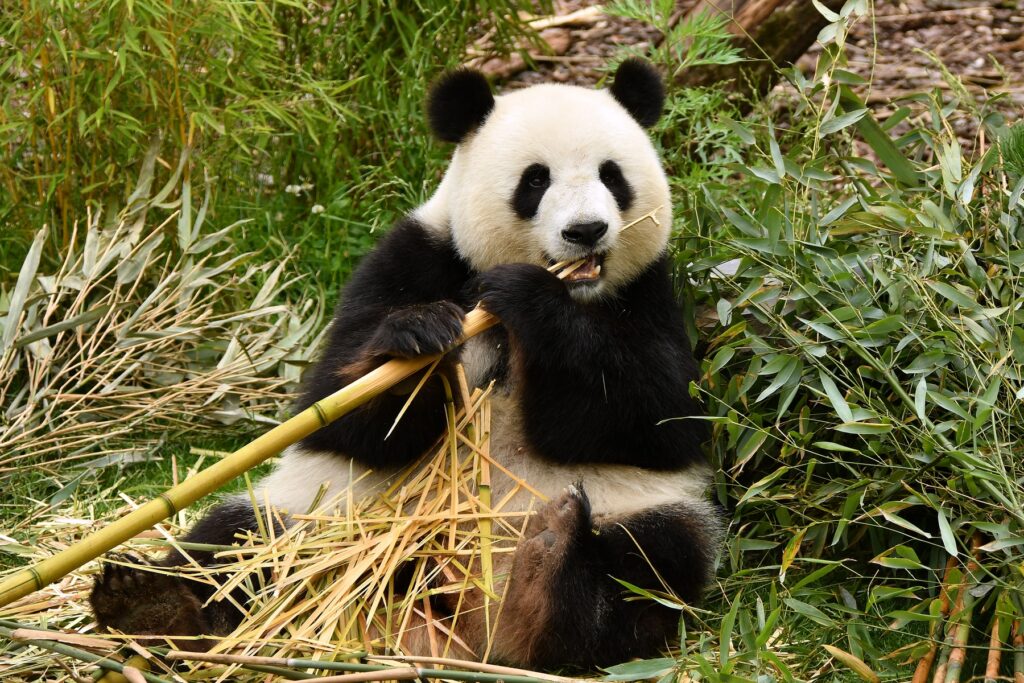
Bild: Sherman-Burbano-Moreno-CC-BY-NC-SA
Jättepandan som blev vegan
Även jättepandan, är en födospecialist. Jättepandan lever i Sydostasien och tillhör björnsläktet. Den var från början köttätare, men har genom evolutionen förändrats till att äta nästan enbart bambuskott. Pandans tänder är anpassade till att tugga hårda och vassa bambuskott, och dess magsäck och matstrupe har fått tjockare hud för att klara av bambun.
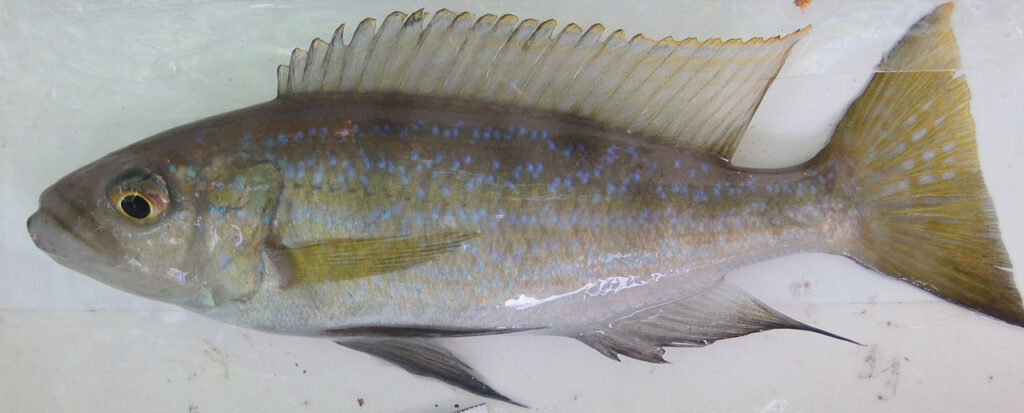
Bild: Henrik-Kusche-Axel-Meyer-Collection-Konstanz-CC-BY
Fjällätande fiskar
Det är hård konkurrens mellan fiskar som lever i de afrikanska sjöarna Tanganyikasjön och Malawisjön. För att överleva har de hittat sina egna nischer och en del av ciklidfiskarna har blivit födospecialister. Vissa är rovfiskar, andra är växtätare eller planktonätare.
En ciklid har specialiserat sig lite extra. Fjällätaren Perissodus microlepis lever på att äta fjäll från andra fiskar. Den härmar utseendemässigt en annan ciklidart, och kan på det viset komma närmare andra fiskar och bita av några av deras fjäll. I perioder, när det är ont om föda, är detta en fördel. Det är lättare att äta några fjäll än att sluka en hel fisk. Det finns ett tiotal fjällätande ciklidarter i Tanganyika- och Malawisjön.

Ridleys råttsnok
Orthriophis taeniurus ridleyi
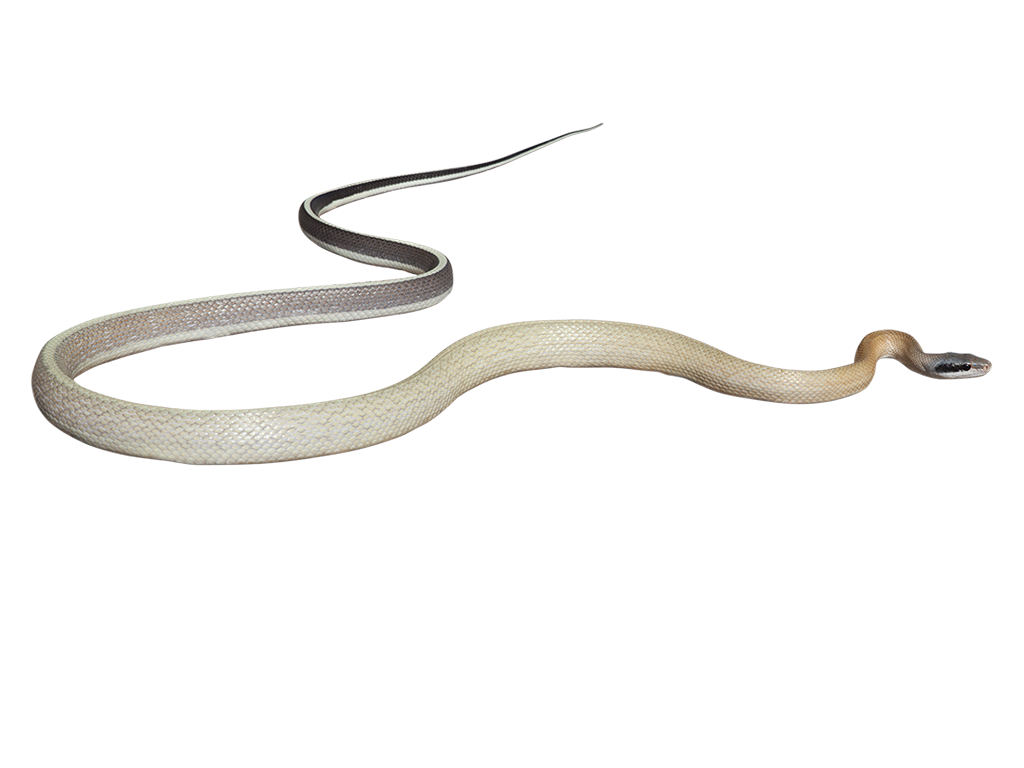
Lägger sig och gapar i väntan på mat
Ridleys råttsnok är en riktigt foderspecialist. Det betyder att den äter en väldigt specifik kost, och i stort sett aldrig något annat än den. I denna orms fall är det två saker som står på menyn – fladdermöss och bon från en fågel som heter grottsalangan. Fågeln är en släkting till den svenska arten tornseglare. Både fladdermössen och grottsalanganernas bon finns i grottorna där ridleys råttsnok lever.
När ormen ska jaga, lägger den sig på en klippavsats med munnen öppen – och väntar tills en fladdermus flyger förbi så nära att ormen kan hugga tag i den. Ridleys råttsnok har inget gift, i stället kramar den ihjäl sitt byte – precis som en boaorm.
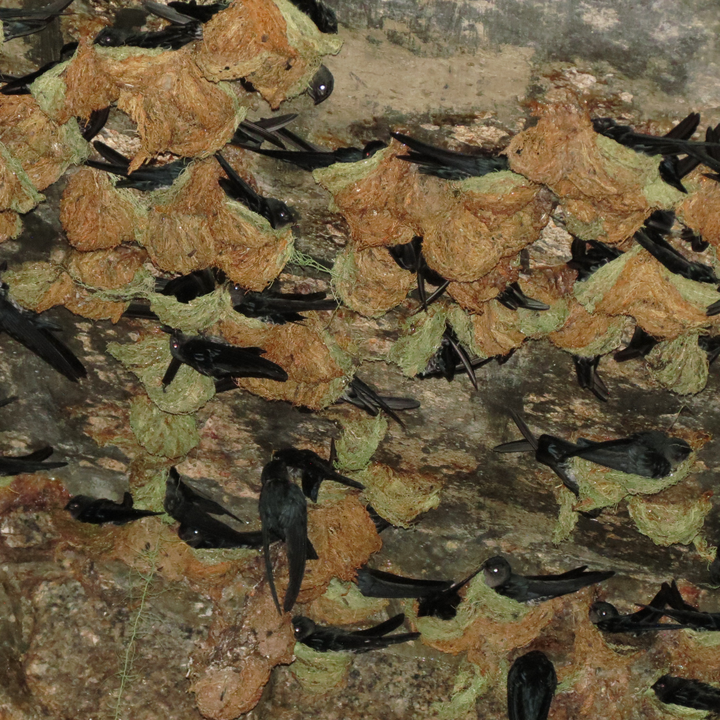
Bild: Andrewbogott-CC-BY-SA
Lever i mörkret
Det finns flera olika arter av råttsnokar, men ridleys råttsnok är den enda som lever i grottor. Det är därför den är så blek i färgen, eftersom starka färger och kamouflage inte behövs för de djur som lever helt i mörkret. Grottorna är kalkstensgrottor, i Thailand och Malaysia. Ormen är snabb, och en duktig klättrare.
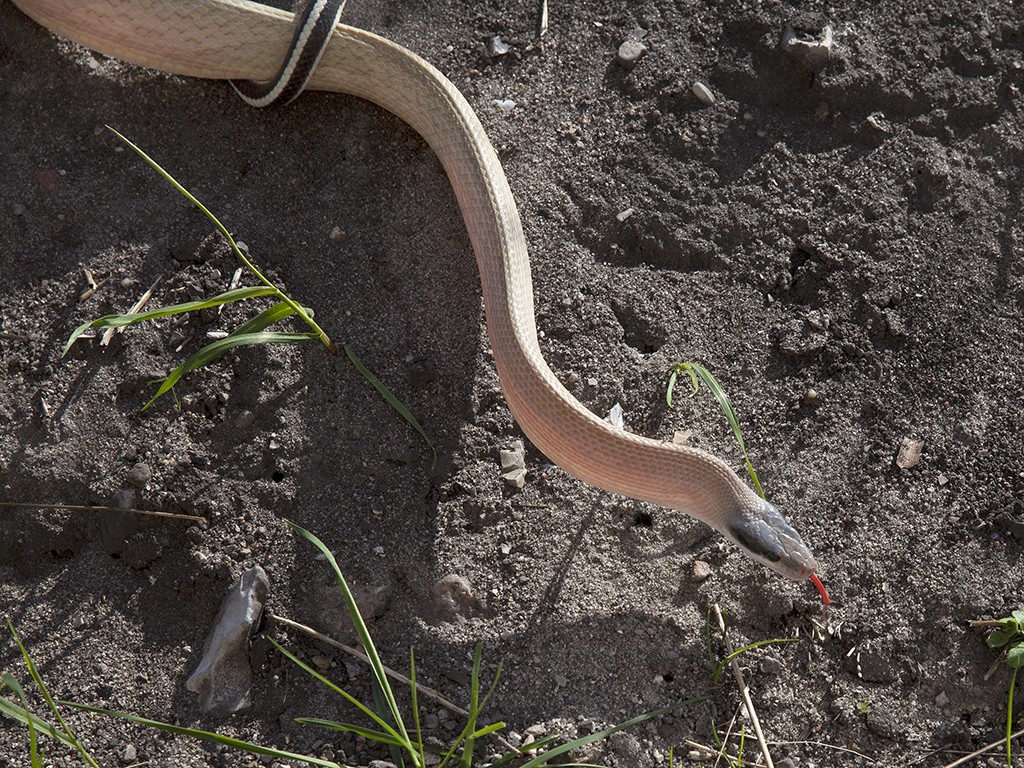
Bild: Johanna-Rylander-Malmö-Museer.
Utbredningsområde i världen
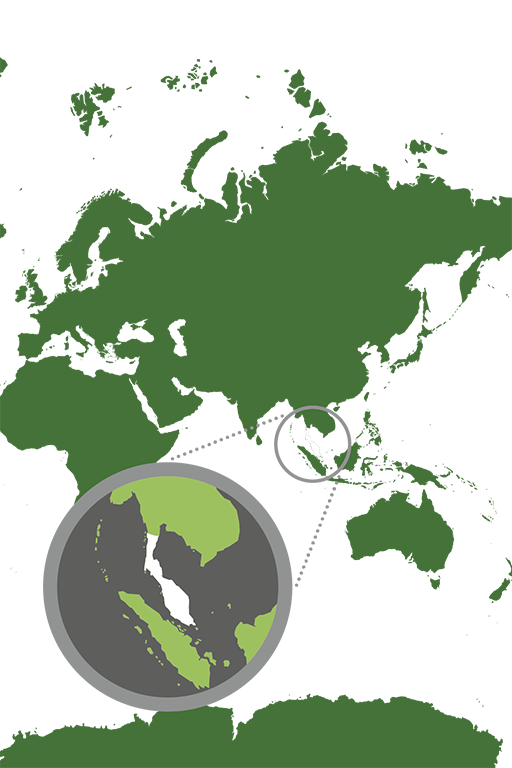
Thailand och Malaysia.
Vi markering = Utbredningsområde
Hotstatus enligt Rödlistan

Reglerad inom handel
CITES: Ej listad.

Vad är Rödlistan?
Rödlistning är ett sätt att bedöma om olika djur- och växtarter är utrotningshotade utifrån kriterier som hur många djur eller växter som finns av arten och hur utbredda de är. En nationell rödlistning bedömer artens risk att dö ut inom ett lands gränser. Den internationella rödlistningen bedömer artens risk att dö ut över hela jorden.
Läs mer

Om rödlistning i Sverige: Artdatabanken, www.artdatabanken.se
Om rödlistning i världen: International Union for Conservation of Nature, IUCN, www.iucn.org

Vad är CITES?
För att bekämpa olaglig handel med djur och växter finns en internationell överenskommelse om handel, som heter CITES. CITES innebär att utrotningshotade djur och växter inte får köpas eller säljas mellan olika länder utan tillstånd.
CITES klassar olika arter i olika kategorier (som kallas Appendix I, II och III) beroende på hur hotad arten är. Ju större hotet från handeln är desto högre skydd. Inom EU finns ytterligare skydd för arter i CITES. EU:s egen klassning har fyra steg: A-D.

Bild: Steve-Hillebrand
Förbjudet att handla med viltfångade arter
Högst skydd mot handel har de arter som är inom kategori A och B. Här gäller oftast att handel mellan EU och övriga världen är förbjuden utan tillstånd. Arter som är CITES A eller B-klassade får inte heller köpas eller säljas inom EU om det inte kan bevisas att de har lagligt ursprung och inte fångats i det vilda.
Att använda växter eller djur för att tillverka souvenirer och annat är också förbjudet. Den som bryter mot reglerna kan dömas till böter eller fängelse.
Kontrollera spridning av arter

Arter som är CITES C-klassade är utrotningshotade i ett visst land men inte nödvändigtvis i hela världen. CITES D-klassning betyder att en art importeras i så stort antal att de behöver regleras för att inte riskera att sprida sig okontrollerat där de inte hör hemma.

Specialist or generalist in terms of food
There are very few areas on Earth where there is no life. Everywhere, animals and plants have adapted to their environment. The area where a species lives is called a habitat. There are usually many different species in the same habitat. Species compete with each other for food, shelter and reproduction. In some cases, being an omnivore, like humans, can be an advantage.
As humans, we are generalists. We adapt well to different environments and can eat many different plants and animals found in our surroundings. But in many cases, it can be beneficial to specialise in a particular place, a small niche within a larger area. It can also be good to specialise in a particular food that other animals might not eat – that way there’s more food left over for you!
Koalas are specialised in eating toxic eucalyptus leaves. When koala babies are young - they are not able to digest the leaves by themselves. Instead they eat their mother's faeces.
Digesting the toxic eucalyptus leaves takes a lot of energy, that's why koalas sleep a lot.
Photo: Treasured-Distractions-CC-BY-NC-ND
Ridley's beauty rat snake is also a specialist. It eats bats, and birdnests.
Photo: Johanna-Rylander-Malmö-Museer
The cabbage butterfly caterpillar is specialised in eating leaves from cabbage.
Photo: S.-Rae-CC-BY
Koalas and toxic eucalyptus
The koala, Phascolarctos cinereus, is a marsupial that lives in Australia. The koala has adapted to a life in the trees and is rarely on the ground. The koala is a food specialist and eats mainly leaves from eucalyptus trees. These are low-nutrient leaves, which are toxic to many other animals. The koala’s specialisation in eucalyptus leaves means that it can keep all its food for itself.

Photo: Sherman-Burbano-Moreno-CC-BY-NC-SA
The giant panda who went vegan
Another food specialist is the giant panda, Ailuropoda melanolueca. The giant panda lives in Southeast Asia and belongs to the bear family. It was originally a carnivore, but through evolution it has changed to eat almost exclusively bamboo shoots. The panda’s teeth are adapted to chew hard, sharp bamboo shoots, and its stomach and oesophagus have thickened to cope with the bamboo.

Photo: Henrik-Kusche-Axel-Meyer-Collection-Konstanz-CC-BY
Scale-eating fish
There is fierce competition between fish living in the African lakes of Lakes Tanganyika and Malawi. To survive, they have found their own niches and some of the cichlids have become specialists in terms of what they eat. Some are predators, others are herbivores or plankton-eaters.
One cichlid has specialised a little extra. The scale-eating Perissodus microlepis feeds on the scales of other fish. It mimics the appearance of another cichlid species, and can get close enough to other fish that it can bite off some of their scales. At times, when food is scarce, this is an advantage. It is easier to eat a few scales than to devour a whole fish. There are about ten species of scale-eating cichlids in Lakes Tanganyika and Malawi.

Ridley’s beauty rat snake
Orthriophis taeniurus ridleyi

Waiting for food with a wide-open mouth
Ridley’s beauty snake is a true specialist when it comes to food. This means that it has a very specific diet, and virtually never eats anything other than that. In this snake’s case, there are two things on the menu – bats and the nests of a bird known as the cave swiftlet. The bird is a relative of the Swedish species of common swift. The nests of both the bats and the cave swiftlets can be found in the caves where Ridley’s beauty snake lives. When the snake is about to hunt, it lies down on a ledge with its mouth open – and here it waits until a bat flies by close enough for the snake to catch it. Ridley’s beauty snake has no venom, instead it squeezes its prey to death – just like a boa.

Photo: Andrewbogott-CC-BY-SA
Lives in darkness
There are several different species of rat snakes, but the Ridley’s beauty snake is the only one that lives in caves. This is why it is so pale in colour, as bright colours and camouflage are not needed for animals that live completely in the dark. The caves are limestone caves in Thailand and Malaysia. The snake is fast, and a good climber.

Photo: Johanna-Rylander-Malmö-Museer.
Distribution worldwide
Thailand and Malaysia.
White marking = Distribution

Threat based on the Red List

Trade regulations
CITES: Not listed.

What is the Red List?
The Red List is a way to assess whether different animal and plant species are at risk of extinction based on criteria such as how many animals or plants of a species exist and how widely distributed they are. A national Red List assesses a species’ risk of dying out within national borders. The international Red List assesses a species’ risk of dying out worldwide.
Read more

About the Red List in Sweden: The Swedish Species Information Centre (Artdatabanken), www.artdatabanken.se/en/
About the Red List worldwide: The International Union for Conservation of Nature (IUCN), www.iucn.org

What is CITES?
CITES (the Convention on International Trade in Endangered Species of Wild Fauna and Flora) is a treaty that makes it illegal to buy or sell animals and plants that are at risk of extinction between countries without a permit.
CITES classifies species into different categories (called Appendix I, II and III) depending on how endangered each species is. In addition, the more the species is threatened by international trade, the higher its level of protection. Within the EU, CITES-listed species are further classified and protected by the EU’s own classification system. This has four Annexes, from A to D.

Photo: Steve-Hillebrand
Ban on trading wild-caught species
The highest protection against trade is given to CITES-listed species included in the EU’s Annexes A and B. Usually this means that trade between the EU and the rest of the world is illegal without a permit. There is also a ban on trading these species within the EU unless it can be proved that they have a lawful origin and were not caught in the wild.
It is also forbidden to use plants or animals to make souvenirs etc. Anyone who breaks these regulations can be fined or imprisoned.
Controlling the spread of species

CITES-listed species that are in the EU’s Annex C are classified as endangered in at least one country but not necessarily in the whole world. An Annex D classification means that individual members of a species may be imported to the extent that they do not need to be regulated to avoid any risk of them spreading uncontrollably where they do not belong.
